You might wonder, “What are the best snails for a planted tank?” This question is not just a fleeting thought but a concern that haunts many aquarium enthusiasts.
The best snails for a planted tank are those that complement the ecosystem without harming the plants. Species like Nerite Snails, Mystery Snails, and Malaysian Trumpet Snails are often considered ideal for maintaining a balance in a planted aquarium.
I remember the first time I spotted a snail in my planted tank. It was a moment of intrigue followed by a pang of worry. Over the years, I’ve faced challenges with snails either overpopulating the tank or feasting on the plants I so lovingly nurtured. From trying different snail species to adjusting the tank environment, the journey has been filled with trials and triumphs.
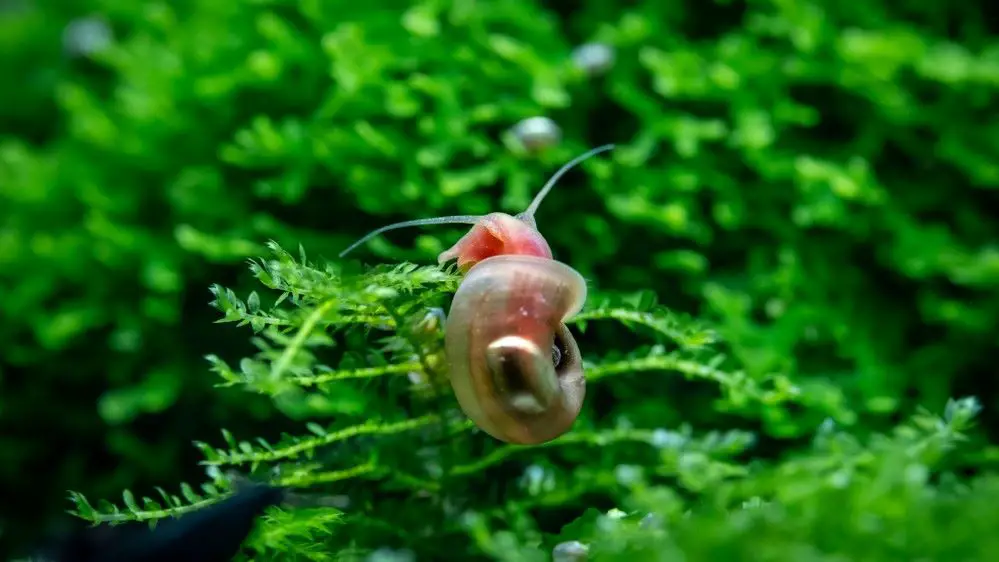
There was a time when I battled with a Ramshorn snail infestation, only to discover that they were actually beneficial to my tank’s ecosystem. Another instance was when I introduced Nerite Snails, and they turned out to be the perfect companions for my plants, helping in algae control without harming the foliage.
This article is a culmination of those experiences and insights gathered over a span of several years. Whether you’re a novice shrimp keeper or a seasoned aquarist, the quest to find the perfect snail for your planted tank is a common pursuit.
Join me as we delve into the world of snails, exploring their roles, benefits, and how to choose the right ones for your planted haven. The journey might be filled with surprises, but the destination is worth every twist and turn. Let’s embark on this snail trail together, shrimpfam!
What types of snails are best for a planted tank?
Choosing the right type of snail for a planted tank is a delicate balance. The ideal snail species should contribute positively to the ecosystem without causing harm to the plants. Let’s explore some of the best options:
Nerite Snails

Nerite Snails are a popular choice among aquarists. They are renowned for their algae-eating abilities, which help keep the tank clean. Unlike some other snails, Nerite Snails are not known to eat live plants, making them a safe option for a planted tank. They come in various patterns and colors, adding visual appeal to the aquarium.
Mystery Snails
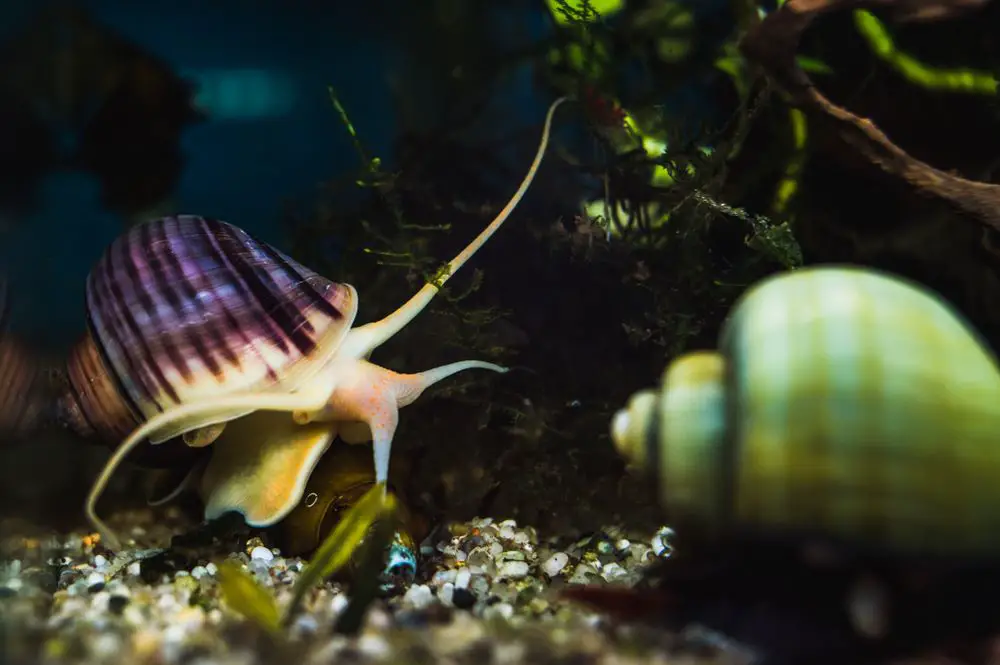
Mystery Snails are another excellent choice for planted tanks. They are gentle giants that move slowly around the tank, consuming algae and detritus. Mystery Snails are not plant-eaters, so they won’t damage your aquatic greenery. They are also known for their attractive appearance, with shells that can be golden, blue, or even purple.
Malaysian Trumpet Snails
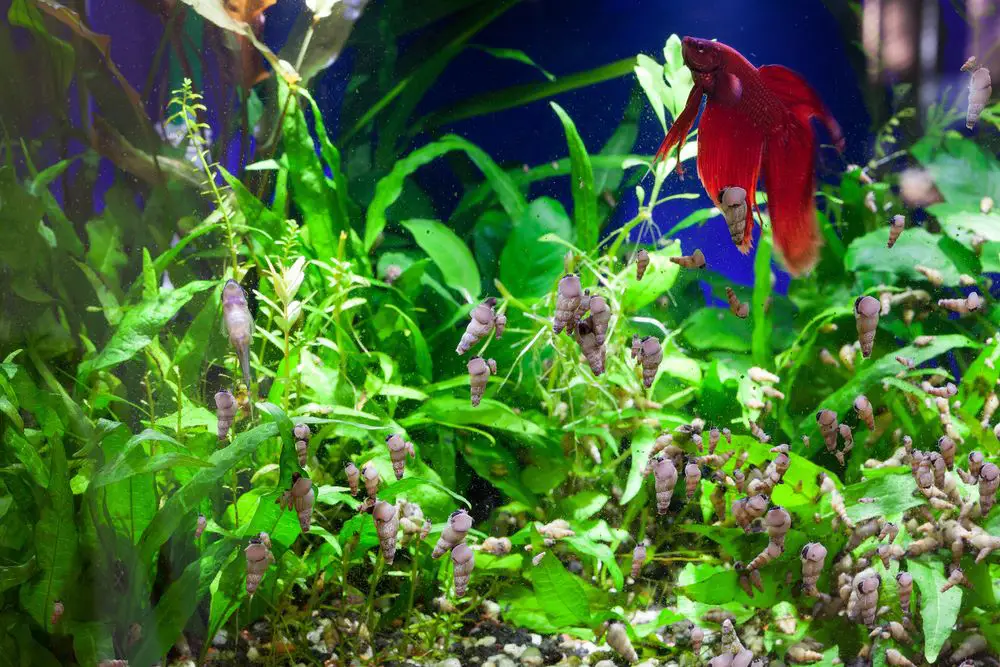
Malaysian Trumpet Snails are unique in their behavior and contribution to a planted tank. They burrow into the substrate, aerating the soil and helping the plant roots to access nutrients. This behavior promotes healthy plant growth. Malaysian Trumpet Snails also eat algae and leftover food, but they don’t harm live plants.
Ramshorn Snails
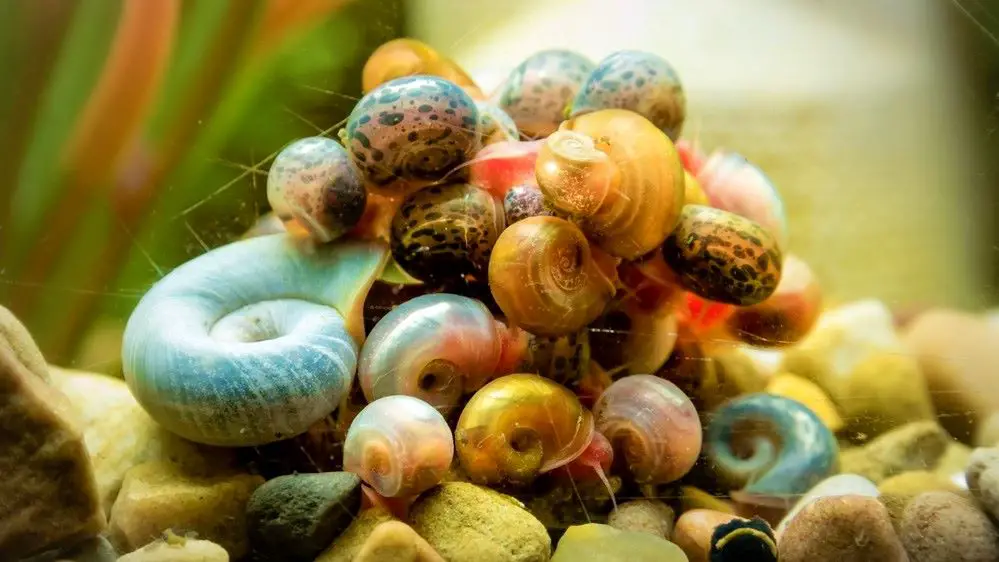
Ramshorn Snails might be a controversial choice, as some aquarists have reported them nibbling on plants. However, they usually target decaying plant matter rather than healthy plants. Ramshorn Snails contribute to the tank’s cleanliness by consuming algae and dead organic material.
Avoiding Plant-Eating Snails
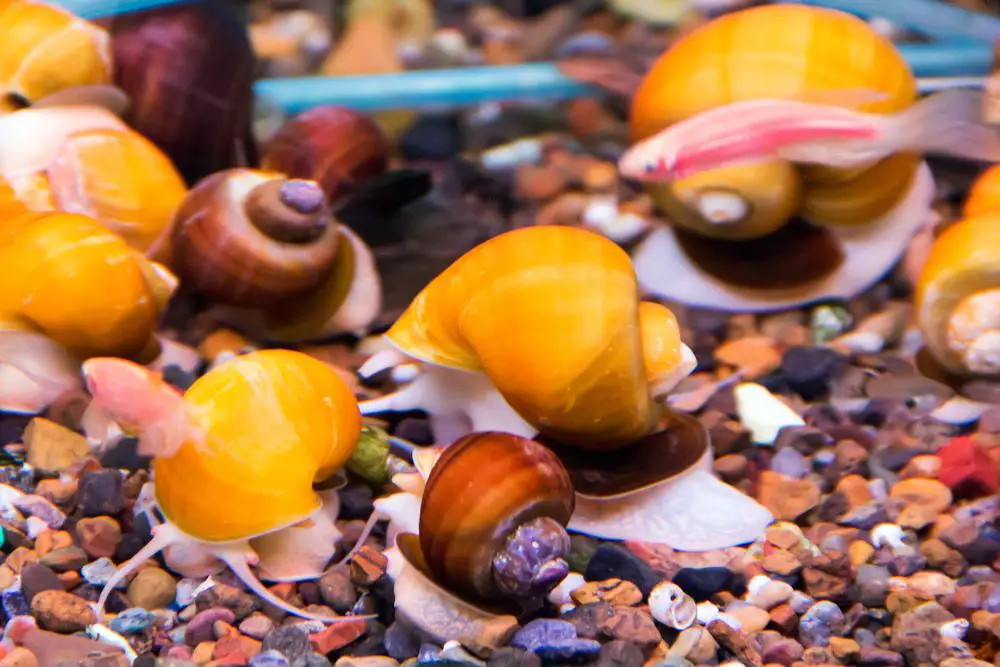
Be cautious about introducing snails known to eat live plants, such as some Pond Snails and Apple Snails. Researching and understanding the specific needs and behaviors of the snail species you’re considering is crucial to maintaining a thriving planted tank.
Selecting the right snail for a planted tank involves understanding the snail’s role in the ecosystem, its compatibility with plants, and its contribution to the overall health and aesthetics of the aquarium. By choosing snails that complement rather than conflict with the plants, you can create a harmonious environment that thrives.
How do snails benefit a planted aquarium?
Snails are often seen as more than just decorative elements in a planted aquarium; they play vital roles that contribute to the overall health and balance of the ecosystem. Let’s delve into the various ways snails benefit a planted aquarium:

Algae Control
One of the most significant contributions of snails to a planted aquarium is their ability to control algae. Algae can quickly overgrow and smother plants, depriving them of light and nutrients. Snails like Nerite and Mystery Snails feed on algae, keeping it in check and allowing plants to thrive.
Aeration of Substrate

Some snails, such as Malaysian Trumpet Snails, burrow into the substrate, creating channels that allow water and oxygen to reach plant roots. This aeration promotes healthy root growth and helps in nutrient absorption, leading to robust and vibrant plants.
Decomposition

Snails contribute to decomposition by feeding on dead plant matter, leftover food, and other organic debris. This natural recycling helps in maintaining water quality and provides additional nutrients to the plants. Snails like Ramshorn Snails are particularly efficient in breaking down decaying material.
Biological Indicators
Snails can also act as biological indicators, reflecting the overall health of the aquarium. Sudden changes in their behavior or appearance might signal underlying water quality issues, allowing you to take corrective measures before the plants and other inhabitants are affected.
Aesthetic Appeal
Beyond their functional roles, snails add aesthetic value to a planted aquarium. Their graceful movements, unique shapes, and colorful shells can enhance the visual appeal of the tank. Watching snails glide over leaves and rocks can be a calming and mesmerizing experience.

Balancing the Ecosystem
Snails are part of the complex web of life within a planted aquarium. They interact with plants, fish, and other organisms, contributing to a balanced and stable ecosystem. Their presence can deter certain pests and create a more harmonious environment.
Caution in Selection
While snails offer numerous benefits, choosing species compatible with your specific plants and tank conditions is essential. Not all snails are suitable for every planted aquarium, and some might even harm the plants.
Snails are multifaceted creatures that offer a range of benefits to a planted aquarium. From algae control to aesthetic enhancement, their presence can enrich the tank in various ways. Understanding their roles and selecting the right species can lead to a thriving and beautiful planted aquarium, where both plants and snails coexist in harmony.
How to introduce snails into a planted tank without harming the ecosystem?
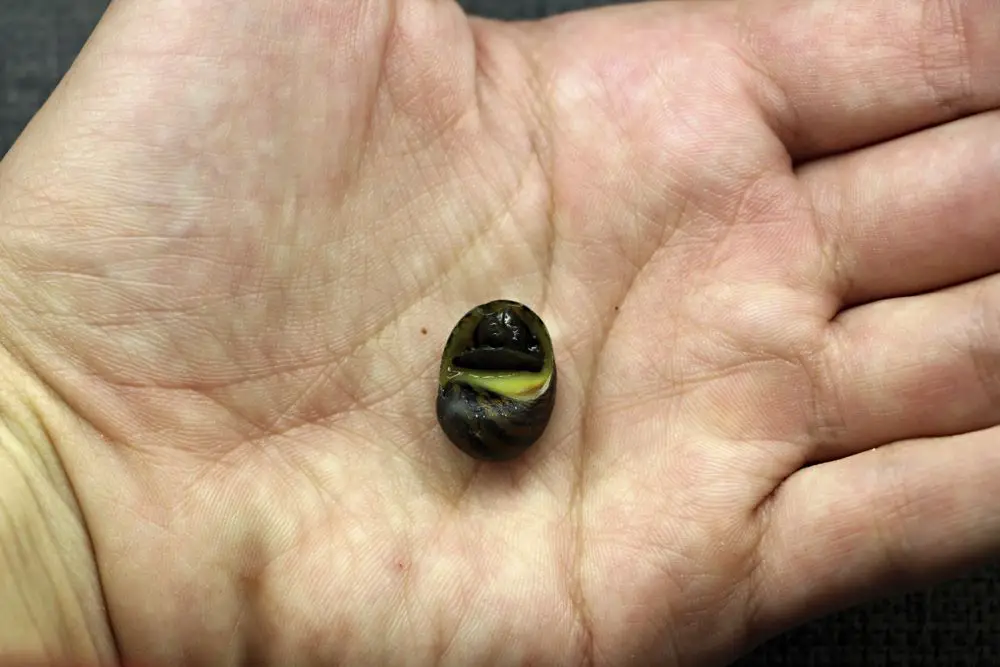
Introducing snails into a planted tank requires careful consideration and planning to ensure that the ecosystem remains balanced and the plants are unharmed. Here’s a step-by-step guide to doing it right:
Assess the Needs of Your Tank
Before introducing snails, understand the specific needs of your tank. Determine what you want the snails to accomplish, whether it’s algae control, substrate aeration, or aesthetic appeal. This assessment will guide your choice of snail species.
Choose the Right Snail Species
Select snails that are compatible with your plants and other tank inhabitants. Research the snails’ behaviors, dietary preferences, and potential impact on plants. Snails like Nerite, Mystery, and Malaysian Trumpet Snails are often suitable for planted tanks.
Quarantine and Acclimate
Before introducing snails into the main tank, it’s advisable to quarantine them to observe their health and behavior. Gradually acclimate them to the tank’s water parameters to reduce stress and ensure a smooth transition.

Monitor Population
Snails can reproduce rapidly, leading to overpopulation and potential harm to the plants. Keep an eye on the snail population and take measures to control it if necessary. Some snail species are less prone to overpopulation, so choose wisely.
Observe Interactions
Once the snails are introduced, closely observe their interactions with the plants and other tank inhabitants. Ensure that they are not harming the plants or disrupting the balance of the ecosystem.
Maintain Water Quality
Proper water quality is essential for both plants and snails. Regular water testing and maintenance will help keep the environment stable and healthy for all inhabitants.
Provide Appropriate Food
If the snails are introduced for algae control, ensure that there is enough algae for them to feed on. If not, provide suitable snail food to prevent them from turning to the plants for nourishment.
Educate Yourself
Continuously educate yourself about the specific needs and behaviors of the snails you’ve chosen. Understanding their roles and requirements will help you integrate them successfully without harming the plants or the ecosystem.
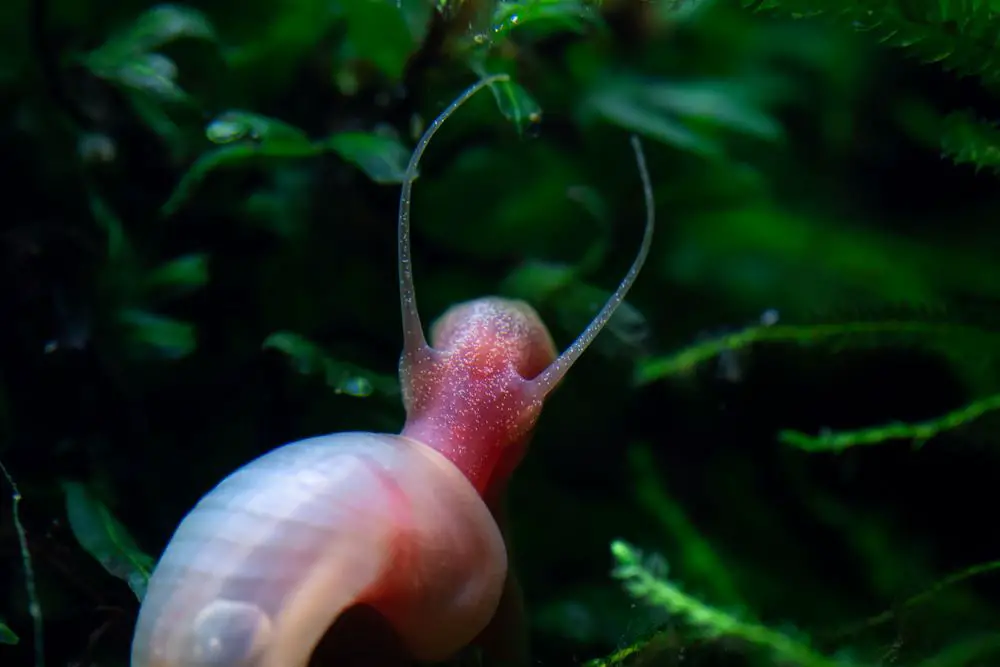
Conclusion: Snails in a Planted Aquarium
Snails are not merely ornamental additions to a planted aquarium but vital contributors to its overall health and harmony. Their roles are essential, from controlling algae to aerating the substrate.
Choosing the right types of snails, understanding their benefits, and integrating them thoughtfully into the ecosystem can lead to a thriving and visually appealing planted tank.
The journey of snail keeping in a planted aquarium is filled with discoveries and joys. Please don’t hesitate to reach out if you need any help or guidance along this snail trail. If you can’t find me here, check out Aquarium Shrimp Keeping on Facebook. Happy Snail Keeping, shrimpfam!
FAQ Section
Q. Can you put snails in a planted tank?
A. Yes, snails can be placed in a planted tank, and they often provide several benefits such as algae control, substrate aeration, and decomposition of organic matter. It’s essential to choose snail species that are compatible with the plants and overall ecosystem of the tank.
Q. What snails don’t eat plants?
A. Snails like Nerite Snails, Mystery Snails, and Malaysian Trumpet Snails are known for not eating live plants. They focus on consuming algae and decaying organic matter, making them suitable for planted tanks without harming the plants.
Q. What are the best snails for fish waste?
A. Snails that are efficient scavengers, such as Malaysian Trumpet Snails and Ramshorn Snails, are good at consuming fish waste and leftover food. They help in breaking down this waste into simpler compounds, contributing to the cleanliness and nutrient balance of the tank.
Q. Are mystery snails good for planted tanks?
A. Yes, Mystery Snails are considered good for planted tanks. They are gentle with plants and focus on eating algae and detritus without damaging live plants. Their attractive appearance and slow movement also add to the aesthetic appeal of the tank.
